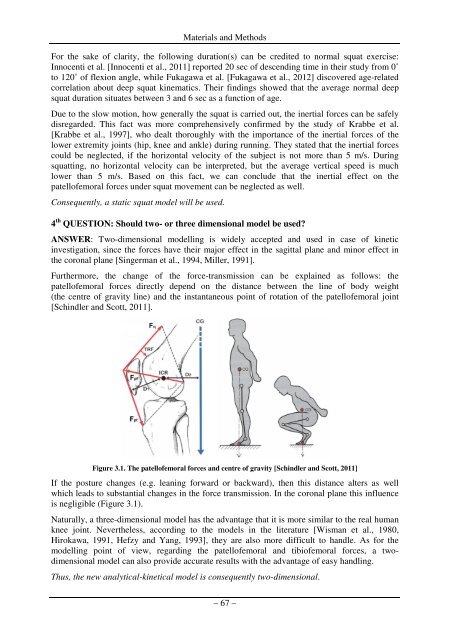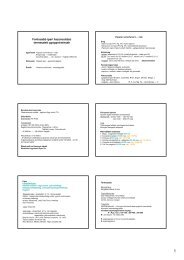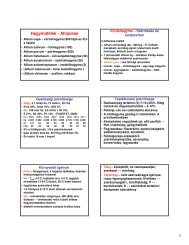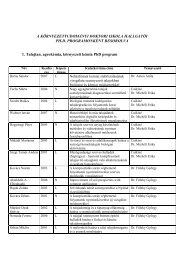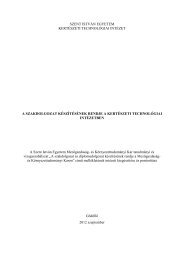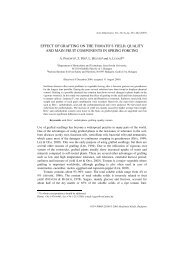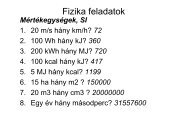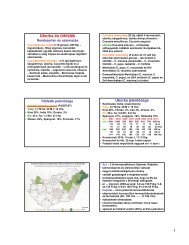PhD Fekete - SZIE version - 2.2 - Szent István Egyetem
PhD Fekete - SZIE version - 2.2 - Szent István Egyetem
PhD Fekete - SZIE version - 2.2 - Szent István Egyetem
Create successful ePaper yourself
Turn your PDF publications into a flip-book with our unique Google optimized e-Paper software.
Materials and Methods<br />
For the sake of clarity, the following duration(s) can be credited to normal squat exercise:<br />
Innocenti et al. [Innocenti et al., 2011] reported 20 sec of descending time in their study from 0˚<br />
to 120˚ of flexion angle, while Fukagawa et al. [Fukagawa et al., 2012] discovered age-related<br />
correlation about deep squat kinematics. Their findings showed that the average normal deep<br />
squat duration situates between 3 and 6 sec as a function of age.<br />
Due to the slow motion, how generally the squat is carried out, the inertial forces can be safely<br />
disregarded. This fact was more comprehensively confirmed by the study of Krabbe et al.<br />
[Krabbe et al., 1997], who dealt thoroughly with the importance of the inertial forces of the<br />
lower extremity joints (hip, knee and ankle) during running. They stated that the inertial forces<br />
could be neglected, if the horizontal velocity of the subject is not more than 5 m/s. During<br />
squatting, no horizontal velocity can be interpreted, but the average vertical speed is much<br />
lower than 5 m/s. Based on this fact, we can conclude that the inertial effect on the<br />
patellofemoral forces under squat movement can be neglected as well.<br />
Consequently, a static squat model will be used.<br />
4 th QUESTION: Should two- or three dimensional model be used?<br />
ANSWER: Two-dimensional modelling is widely accepted and used in case of kinetic<br />
investigation, since the forces have their major effect in the sagittal plane and minor effect in<br />
the coronal plane [Singerman et al., 1994, Miller, 1991].<br />
Furthermore, the change of the force-transmission can be explained as follows: the<br />
patellofemoral forces directly depend on the distance between the line of body weight<br />
(the centre of gravity line) and the instantaneous point of rotation of the patellofemoral joint<br />
[Schindler and Scott, 2011].<br />
Figure 3.1. The patellofemoral forces and centre of gravity [Schindler and Scott, 2011]<br />
If the posture changes (e.g. leaning forward or backward), then this distance alters as well<br />
which leads to substantial changes in the force transmission. In the coronal plane this influence<br />
is negligible (Figure 3.1).<br />
Naturally, a three-dimensional model has the advantage that it is more similar to the real human<br />
knee joint. Nevertheless, according to the models in the literature [Wisman et al., 1980,<br />
Hirokawa, 1991, Hefzy and Yang, 1993], they are also more difficult to handle. As for the<br />
modelling point of view, regarding the patellofemoral and tibiofemoral forces, a twodimensional<br />
model can also provide accurate results with the advantage of easy handling.<br />
Thus, the new analytical-kinetical model is consequently two-dimensional.<br />
– 67 –


